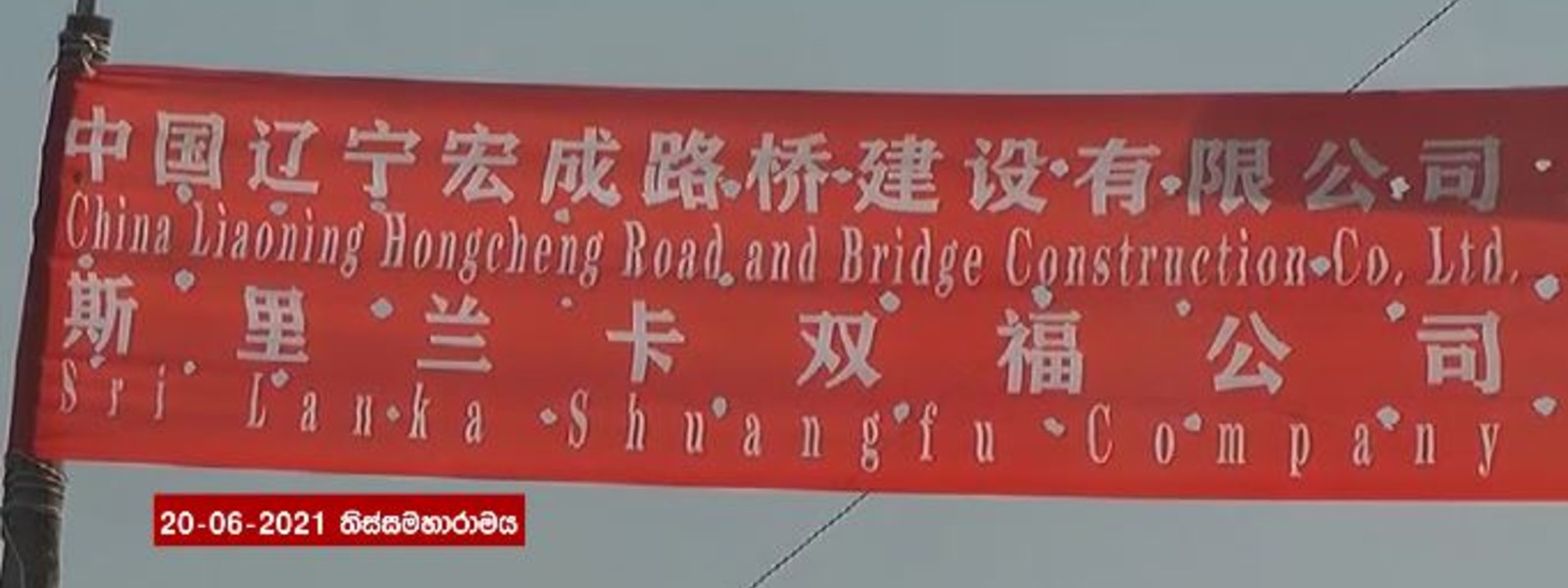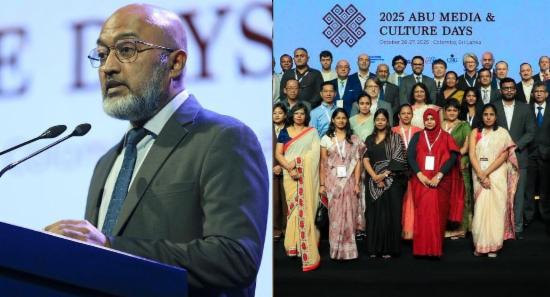.webp)

Why is a Chinese JV ‘cleaning up’ ancient reservoirs in Sri Lanka, for Free?
(Hambantota, South Sri Lanka): A Chinese Joint Venture (JV) to dredge and clean some of Sri Lanka’s most ancient irrigation tanks was launched on Monday (21) and the launch phase will see the cleaning up of the ‘Tissamaharama Wewa’, said to have been constructed in the 3rd Century BC by a Sri Lankan King.
In an extremely strange agreement, the company is not charging the government for the extensive ‘clean-up’ work that includes the installation of specialized machinery but will instead pay for the dredged sediment which it will in turn, sell.
“The water released from the Uma-Oya project will reach the Anuradhapura district soon. Therefore, it is our responsibility to ensure that we store this water in our irrigation system, without allowing it to reach the sea,” the Minister in charge of Irrigation, Chamal Rajapaksa said during the launch of the project. “We are not paying to install this machine. They have to remove the sand and clay deposited in the tank and pay us as well for it. They can take the sand and clay removed from the tank and sell it,” he pointed out.
The 2,300-year old ‘Tissamaharama Wewa’ is believed to have been constructed either by King Mahanaga or King Yatala-Tissa who established the Ruhunu Kingdom.
Chinese interest in Sri Lanka’s Water Systems
Earlier this year, all hell broke loose recently with Min. Chamal Rajapakse recently announcing that the government was seriously considering a proposal to construct ‘reservoirs’ inside the UNESCO World Heritage ‘Sinharaja’ Rain Forest as part of the Gin-Nilwala Diversion Project.
The furore caused by the Ministers comments resulted in a press statement issued via the Department of Government Information, in which the Ministry of Irrigation affirmed the government will act responsibly towards addressing the drinking water crisis as well as protecting rainforests which are home to national water resources.
Irrigation Minister Chamal Rajapaksa said the government has planned on a project to construct two irrigation tanks inside the Sinharaja Rainforest to provide clean water to Hambantota in the far south. Each irrigation tank will span five acres inside the rainforest, said the Minister adding for the five acres lost in Sinharaja a 100-acre forest will be grown at a separate location, he said while admitting that the Sinharaja Rainforest is a protected area.
The Chinese ‘Water Card’
The interesting aspect of this is the fact that this project, according to the Minister, has been handed to a Chinese company. The Geo-politics of Water is a modern reality that must be understood by Sri Lanka in order to make prudent decisions and protect access to our own resources in the future. An example of this is China’s control over the Tibetan Plateau and the sources of several rivers in the region, with numerous dams built on the Brahmaputra, Irrawaddy, and Mekong rivers, enabling it to store or divert water in a way that might lead to the drying out of vast territories downstream. The diversion of this water could have serious implications for the livelihoods of almost half of the world’s population in South and Southeast Asia.
A recent report published in the Harvard International Review by
Dr.
andDr.
on this subject recognizes the need for the global community, and particularly nations in South and South East Asia to seriously consider the emerging geopolitics of water and the power Beijing can potentially wield by being able to unilaterally “turn off” the taps.Quote
“China’s power was on full display in early 2021: China cut the water flow of the Mekong River by 50 percent without a word of warning, ostensibly for a three-week power-line maintenance project.
§ The decision affected the lives of millions of people along the waterways in the Southeast Asian countries of Cambodia, Laos, Myanmar, Thailand, and Vietnam.
§ The decision did so by disrupting their fishing and farming livelihoods as well as floating markets and coastal houseboat communities that relied on river transportation.
§ The ill-effects of Beijing’s decision were amplified as the water level continued to drop significantly”.
End Quote.
Sri Lanka’s ancient water heritage at stake?
Observers believe that Sri Lanka would do well to walk into these ‘free lunch’ deals with her eyes-wide-open. Even a child would realize that there is something a lot more valuable at stake, if the company is willing to invest the cost of the project, and then also pay for the sediment, which it will then sell.
Sri Lanka’s ancient irrigation system (The Cascade System) is the wonder of the ancient world, declared a UNESCO World Heritage Water System recently. The authorities must be mindful of the delicate ecological and soil conservation systems that encompasses each irrigation tank in Sri Lanka. Dredging the bottom of these ancient bodies of water by Chinese companies, with little or no knowledge of these ancient local systems, could result in the irreversibly damage of Sri Lanka’s crowning glory- her ancient hydraulic heritage.
Other Articles
Featured News





.png )
-820827_550x300.jpg)


-820802_550x300.jpg)
-820796_550x300.jpg)





-819380_550x300.jpg)


-812087_550x300.jpg)
-810262_550x300.jpg)
















.gif)